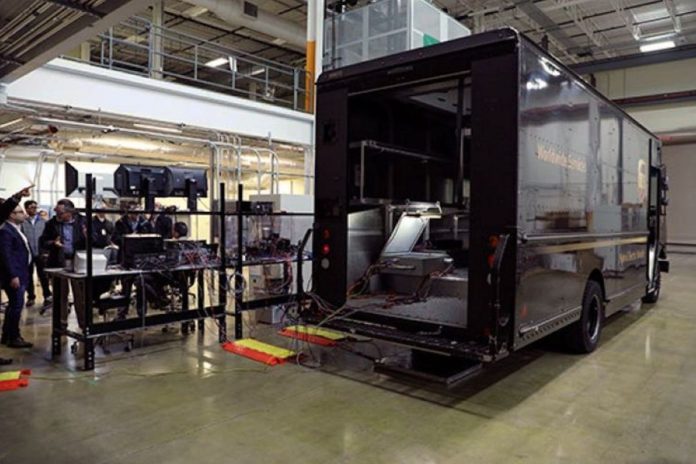A team of researchers at the Oak Ridge National Laboratory (ORNL), in collaboration with the logistics giant UPS, has developed a wireless charging system capable of offering high levels of efficiency. It is also capable of working bi-directionally to use the batteries of the vehicles as a backup when they are on their bases.
In February this year, the 20-kilowatt bi-directional wireless charging system was successfully demonstrated on a UPS medium-duty, plug-in hybrid electric delivery truck.
The vehicle was parked about 28 cm from the source of the charge. From an 11-inch (28 cm) air gap, the ORNL’s wireless charging technology transferred power between the truck and a charging pad using two electromagnetic coupling coils at the demonstration. According to the researchers, the system was capable of achieving an efficiency rate of over 92%, a really impressive figure.
The bi-directional wireless charging system basically receives electricity from the electrical grid and converts it to direct current. Then a high-frequency inverter generates alternating current, which in turn creates a magnetic field that transfers power wirelessly across the air gap. Once the energy is transferred to the secondary coil, it is converted to direct current again to charge the vehicle’s battery.
The system incorporates ORNL’s custom electromagnetic coil design and its own control system, as well as wide-bandgap power conversion systems. A technology that was tested using network grid and battery emulators before integration into the vehicle.
Charging is faster than a cable connection. A conventional wired charging typically takes between five to six hours to charge the vehicle’s 60-kilowatt-hour battery packs, while the new bi-directional wireless charging system takes about three hours.
“Scaling the technology to a fleet of 50 trucks gives you megawatt-scale energy storage,” noted ORNL’s Omer Onar, who led the technical team’s effort at the lab.
In 2016, the research team demonstrated for the first time to the public how their 20 kW cordless charging system works, and have since been working to improve efficiency and increase the power they indicate can reach 120 kW. It is something that will allow for recharging devices in short periods of time, which will facilitate the electrification of various industrial sectors, and open the doors to recharging future autonomous vehicles.
